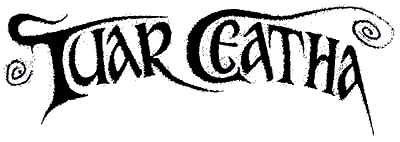

Spinning
The spinning and dyeing of wool in Ireland has a history 6000 years old. Beautiful hand spindles have been found in ancient sites in Mayo. The spindle was just a stick with a weight on the end, but until 150 years ago ALL the cloth woven was spun in this manner, a lot of spinning when you consider that 1 lb of fleece spun over 14000 yards of wool! A wool folklorist was visiting a spinster ( a single woman who spun wool!) and when the woman began to spin she seemed to lose herself in the spinning, quietly humming away and eventually "came out of it" an hour later. Tradition has it that spinning took place between 6 p.m. and midnight. It was believed that the sheep were rested at that time and it's many the spinner that testified to the wool spinning beautifully and not getting snagged. Another tradition has it that the wheel was dismantled at midnight so the fairy folk wouldn't get up to mischief!
Over a long period of time the knowledge of plants as dyes became extensive. Goodness knows how someone would think to scrape an insignificent lichen off a mountainside and produce the most beautiful red and pink dyes. Not only the plants to use were known, but also which part and at what time of the year.
The list is endless. Below is a short list of plant materials used in Ireland:
Colour Plants
Red - Madder root, Early dockleaves, Certain lichens
Orange - Marigolds, Burdock
Yellow - Goldenrod, Heather, Blackberry leaves
Green - Nettles, Dock leaves, Willow herb, Elder leaves
Blue - Woad, Bogmud
Purple - Lichens, Parasite shells, Meadowsweet root and flower
Black - Bogmod (Inky), Meadowsweet root
Cream - Oak bark
Brown - Lichens, Willow barkAt this time the old ways are making a comeback and handspinning and dying are vital to the healing of ourselves and the Earth as the processes involved gets one in touch with ourselves and nature.
Eamonn
|
Home | Articles | Starsigns | Contacts | Recycling | Links | E-mail |
||||||